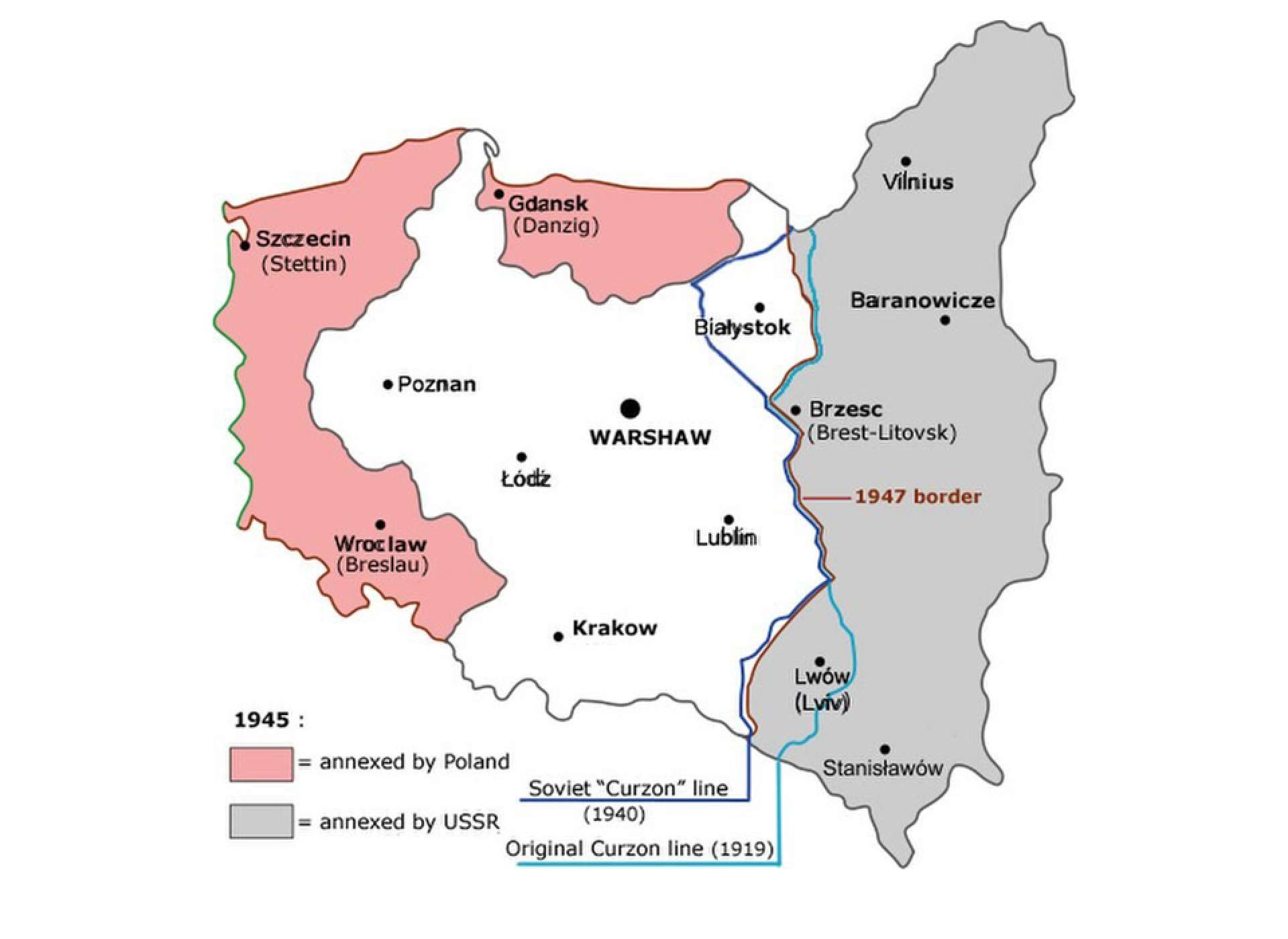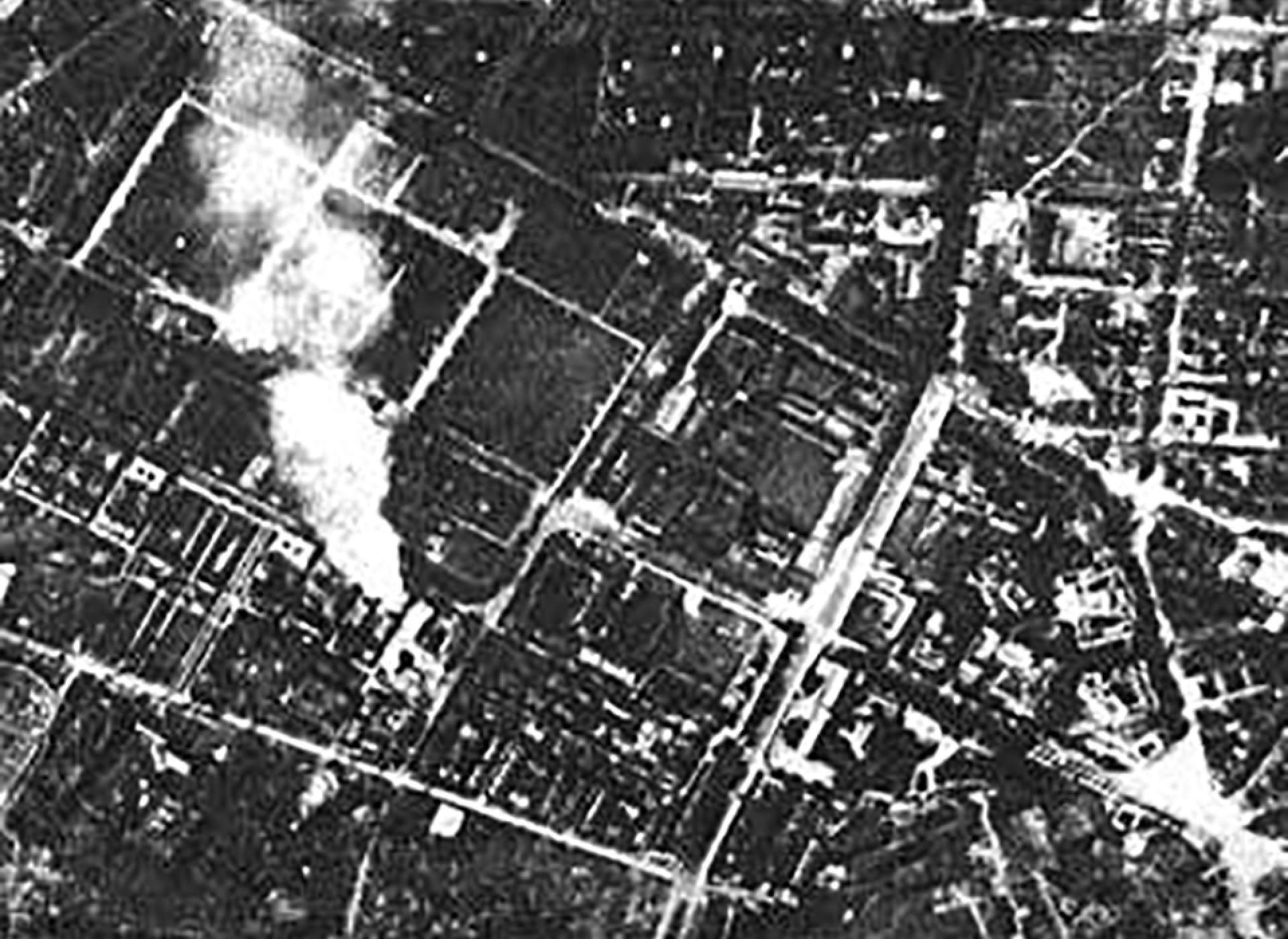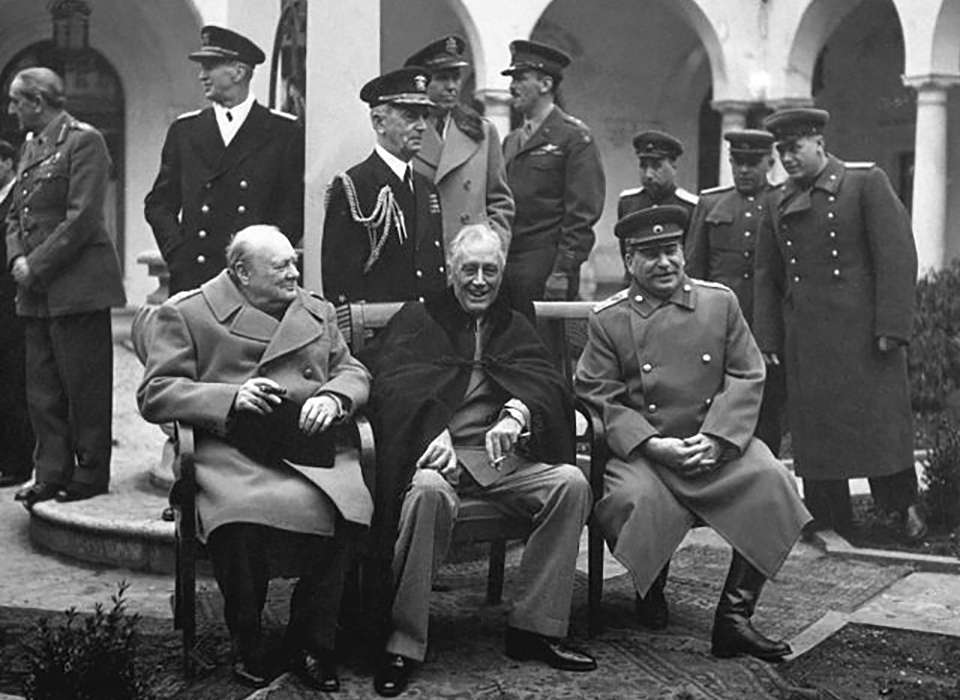In her article, “The Diplomatic Background of the Warsaw Uprising of 1944: The Players and the Stakes,” Anna M. Cienciala argues that the Warsaw Uprising of 1944 “was not only the culmination of Polish resistance against the Germans, but also the climax of the Polish-Soviet dispute over the Polish eastern frontier.”
The lack of coordination between the Home Army (Armia Krajowa, or AK) and the exiled Polish government in London to include Warsaw in Operation Tempest, the brutal German response to the uprising, and declining civilian support all contributed to the uprising’s failure.
Stalin’s desire to decide Poland’s postwar borders and government, however, also played an important role since it guided his decision not to provide sufficient aid to the Polish Home Army. As historian Norman Davies argues, Stalin’s decisions seem to have followed a certain sequence: wait and see what would happen, dissociate himself from the exiled-government’s political leadership, and finally, refuse to assist his allies’ attempts to provide support to the insurgents and civilians trapped in Warsaw.
Stalin’s misrepresentation of the Soviet Army’s situation, and his prohibitions on Allied planes landing on Soviet-occupied airfields, created conflict within the Allied alliance and marked one of the first major disagreements between Stalin and his Western allies.
Disputed Borders
The 2,000 km (approximately 1,200 miles) that separate the Vistula and Volga rivers have historically been a point of contention for Poles and Russians. Stalin made his territorial claims in Eastern Europe clear in mid-December 1941 when he told British Foreign Secretary Anthony Eden that the precondition for an Anglo-Soviet alliance was British recognition of the Soviet Union’s western frontier as of 1941. This included the Soviet annexation of eastern Poland, part of Finland, the Baltic states, as well as Romanian Bessarabia and northern Bukovina.
Following the German invasion of the Soviet Union, General Wladyslaw Sikorski, the Polish Prime Minister in exile and Commander in Chief of its armed forces, concluded a treaty with the Soviet Union on July 30, 1941. The treaty effectively voided the Ribbentrop-Molotov agreement of 1939, which had divided Poland between Nazi Germany and the Soviet Union. It also stipulated the reestablishment of Polish-Soviet relations, military cooperation against Germany, and the creation of a Polish army in the USSR.
The July 1941 treaty stopped short, however, of drawing a permanent border between the two states, since neither could agree on a definite boundary. While the Soviets wanted the frontier to be drawn at the Curzon Line (see map below), the Poles insisted on maintaining Poland’s prewar borders.

Map of Poland showing the Curzon Line and the changes made to Poland’s eastern border. Map of Curzon Line, Spiridon Manoliu, February 25, 2011.
Stalin’s plans for Poland became even clearer at the Tehran Conference in November 1943. It was there that he met with Churchill and Roosevelt to discuss the postwar plans for Eastern Europe and Germany. At Tehran, the three Allied leaders agreed to set Poland’s eastern border with the Soviet Union roughly along the Curzon Line of 1920. In order to compensate Poland for the loss of territory, they also decided to move the German-Polish border west to the Oder and Neisse Rivers. The informal decision, however, was not ratified until the Potsdam Conference of 1945.
Poland was not represented at Tehran and had no say in the matter, but it is important to note that Western leaders made it clear to the exiled Polish Premier that compromise with Stalin over the issue of Poland was absolutely essential to the war effort. As Davies argues, the Western Allies “made no bones about the fact that, in their view, the ‘compromise’ would have to be rather one-sided, Stalin’s demands could not be minimized, and major concessions were unavoidable.” The Western Allies were not strong enough to defeat Hitler on their own, and cooperation with the political aims of the Soviet Union was vital to secure an Allied victory in the war.
The Lack of Soviet Support
Historians generally agree that when the uprising broke out on August 1, 1944, the 1st Belorussian Army under the command of General Konstantin Rokossovsky was in no position to mount an all-out attack on Warsaw. The Red Army was still clinging to its position south of the city and only the lead elements of the 2nd Tank Army were close to Praga, a district located on the eastern bank of the Vistula River.
The rest of the Soviet armies remained too spread out—the 48th and 65th were still over 60 miles from the capital and others focused on taking control of smaller Polish cities. During the first week of August, a German counterattack to the east of the Vistula also compromised two Soviet brigades south of Warsaw.
Stalin’s initial approach to the uprising was to proceed with caution. Rokossovsky’s forces stood little chance of crossing the Vistula within the first two or three weeks of August, and lack of communication proved to be a significant problem. Neither the British nor the Soviets had intelligence officers in Warsaw and, even though Rokossovsky’s forces were only a few miles outside of the Polish capital, there was no way to communicate with them except by radio via London or Moscow.
In Stalin’s mind there was no harm in proceeding carefully. If the Germans were able to crush the AK revolt, Soviet troops could easily liberate the city by the end of August. This would effectively secure Poland within the Soviet sphere of influence, since Stalin already had a governmental body ready to assume control.
On July 21, 1944, the Polish Committee of National Liberation (Polski Komitet Wyzwolenia Narodowego or PKWN) was established in Lublin under the chairmanship of Edward Osobka-Morawski. The PKWN claimed authority over all liberated areas in Poland and denounced the exiled Polish government as “usurpers.”
On August 8, Rokossovsky drew up plans for the next stage of the Soviet campaign. The plan assumed that the German salient east of Warsaw would be limited by the third week of August, which would put him in a position to attack Warsaw and launch a new offensive across the Vistula by August 25. Although the plan was approved by General Georgy Zhukov, Stalin rejected the plan. Instead, he began to divert much greater resources to the northern front in the Baltic and to the southern campaign in the Balkans.
Nevertheless, even without a direct ground attack on Warsaw, Soviet forces had the capability to provide air and artillery support during the month of August, since it controlled six airfields in Poland, one of which was only a 26-minute flight to Warsaw. The issue of airdrops, however, proved to be a point of contention between Stalin and his Western Allies, which caused rifts within the alliance as Stalin increasingly ignored facts on the ground, and insisted the exiled government’s intelligence information was incorrect.
Allied Airdrops
The Western Allies were not opposed to the Warsaw Uprising in principle, but both Churchill and Roosevelt recognized the practical difficulties, and logistically could not provide much assistance to the Polish Home Army. Indeed, both US and British officials warned the exiled Polish government in London of the impossibly high risks involved in such an operation.
Within the first week of the uprising, Churchill authorized RAF flights to Warsaw to drop supplies on the Polish capital. In a telegraph to Stalin dated August 4, Churchill informed Stalin of a planned airdrop that included 60 tons of equipment and ammunition into the south-western quart of the city, to which Stalin replied:
“I think the information given to you by the Poles is greatly exaggerated and unreliable…The Home Army consists of a few detachments [and] misnamed divisions. They have neither guns, aircraft, nor tanks. I cannot imagine detachments like those in Warsaw.”
Stalin also refused to allow Allied planes to land on Soviet airfields, and on August 18 prohibited American bombers from landing at the Poltava air base in Ukraine if the mission was to provide supplies to Warsaw. In order “to avoid the possibility of any misunderstanding” on this point, the Soviet Deputy Commissar for Foreign Affairs, M. Vyshinksy read a prepared statement to the US Ambassador in Moscow stating:
"The Soviet Government cannot of course object to English or American aircraft dropping arms in the region of Warsaw, since this is an American and British affair. But they decidedly object to British or American planes, after dropping arms in the region of Warsaw, landing on Soviet territory, since the Soviet Government do not [sic] wish to associate themselves either directly or indirectly with the adventure in Warsaw.”
The ban particularly outraged Churchill, who later called it “an episode of profound and far-reaching gravity.” Churchill sent several appeals to Stalin to allow Allied planes to use Soviet-controlled airfields, but Stalin repeatedly refused. In one instance, when a British plane landed on a Soviet-controlled airfield, Soviet forces interned the crew until the British embassy in Moscow intervened on their behalf.
Instead, Western Allies used the Brindisi air base in Italy to provide aid to the Polish insurgents. Air Marshal Sir Jack Slessor, deputy air commander for the Mediterranean, however, explained the practical difficulties the Allies faced:
“It was one thing to drop supplies to pre-arranged dropping zones marked by light signals in open country, it was quite another to bring a big aircraft down to a thousand feet over a great city, itself the scene of a desperate battle and consequently a mass of fires and flashes from guns and bursting shells and ringed by anti-aircraft weapons.”
A round trip from Italy to Warsaw was over 1,800 miles, and bad weather during the first two weeks of August prevented the US and British aircraft from making trips to the city. Although British planes began making airdrops on August 13, the losses were disproportionate to the benefits. Many planes were shot down before reaching Warsaw—the Polish Special Deputies Squadron alone lost 16 crews in flights to the besieged city. It was estimated that the Allies lost one bomber for every ton of supplies delivered to the Polish Home Army.

British planes bring aid to the Warsaw Uprising in August 1944. Aerial View of Warsaw, August 1944, in Opracowanie Zbiorowe, Powstanie Warszawskie w Ilustracji: Wydanie Specjalne Warszawskiego Tygodnika Ilustrowanego, Stolica, 44.
The airdrops, despite their losses and the refusal of the Soviet Union to assist in any way, did provide the AK with thousands of small arms, machine pistols, light machine guns, bazookas, mortars, ammunition, plastic explosives, and tons of food. A coordinated-Allied airlift on September 13-14, 1944, for example, provided food, ammunition, and grenades to the besieged city. Only about 50 percent of Allied supplies airlifted, however, actually reached the insurgents.
The Outcome of the Warsaw Uprising
The Warsaw Uprising was catastrophic and had lasting impacts for decades to come. The lack of Soviet support, coupled with the fact that Nazi leaders used untrained SS troops to suppress the uprising, proved disastrous for the AK and civilians living in Warsaw.
Altogether, Polish losses during the uprising included 150,000 civilian deaths and about 20,000 Home Army casualties. The German forces lost an estimated 10,000 troops.
Fighting stopped on October 2, 1944 with the formal surrender of the AK, but during the next three months German forces demolished much of what was left of the city and deported 650,000 civilians to a labor camp south of Warsaw. According to the historian Maciej Siekierski, when Soviet troops finally “liberated” Warsaw in January of 1945, “Poland’s capital was a vast desert of hollow-shelled buildings and rubble.”
Historians who study the origins of the Cold War have increasingly looked at the two-month long uprising as a significant event that caused relations between the Soviet Union and the Western Allies to unravel. According to the historian Alexandra Richie, for instance, the Warsaw Uprising “laid bare the differences between Poland’s desire for a Western style democracy and freedom, and Stalin’s brutal ambitions to Sovietize postwar Central and Eastern Europe.”
One of the important factors that influenced Stalin’s strategy toward Poland was his incessant desire to establish a series of Communist-backed governments in Eastern Europe. “Refusing help brought international criticism,” Halik Kochanski argues, but assisting in airdrops and providing air support would have necessitated “a reversal in the position taken towards the participants in Operation Tempest and force him to recognize the existence and authority of the AK and Underground Government.”
Although the Warsaw Uprising itself did not cause the Cold War, it was a significant step in that direction since it signified the first conflict in a series of disagreements between Stalin and his allies that would come to shape the postwar.
Further Reading
Anna M. Cienciala, “The Diplomatic Background of the Warsaw Uprising of 1944: The Players and the Stakes,” The Polish Review 39, no. 4 (1994): 393-413.
Norman Davies, Rising ’44: The Battle for Warsaw, (New York: Penguin Books, 2003).
Halik Kochanski, The Eagle Unbowed: Poland and the Poles in the Second World War, (Cambridge: Harvard University Press, 2012).
D. Reynolds, ed., Origins of the Cold War in Europe: International Perspectives, (New Haven: Yale University Press, 1944).
Alexandra Richie, Warsaw 1944: Hitler, Himmler, and the Warsaw Uprising, (New York: Picador, 2013).
Jennifer Popowycz, PhD
Jennifer Popowycz, PhD is the Leventhal Research Fellow at The National WWII Museum. Her research focuses on the Eastern Front and Nazi occupation policies in Eastern Europe in World War II.
Cite this article:
MLA Citation:
APA Citation:
Chicago Style Citation:





![Max Fuchs, New York City cantor, sings as Rabbi Sydney [sic] Lefkowitz, Richmond, VA, conducts the first Jewish services from Germany.](/sites/default/files/styles/max_650x650/public/2025-10/image1.jpg)



